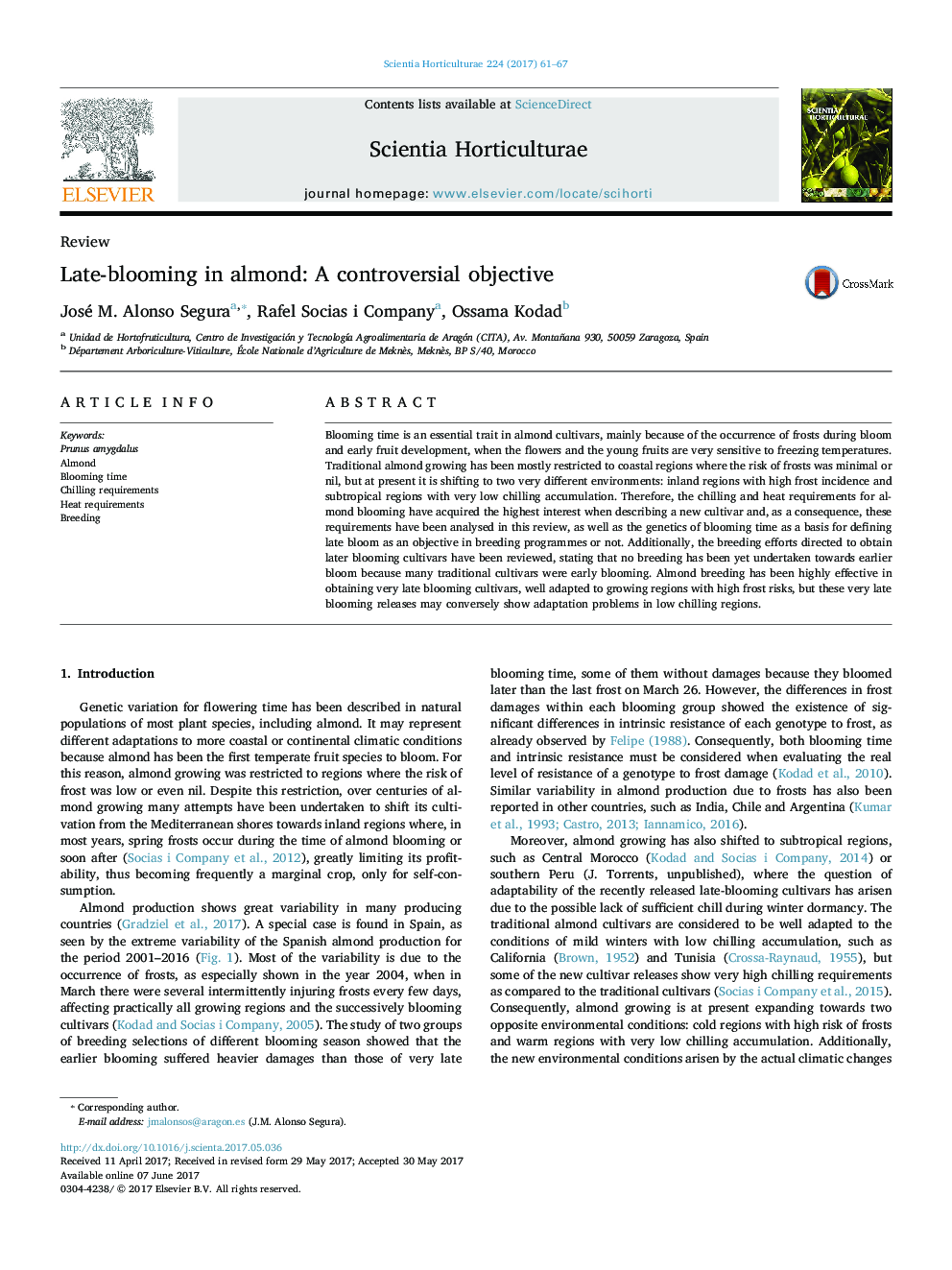| کد مقاله | کد نشریه | سال انتشار | مقاله انگلیسی | نسخه تمام متن |
|---|---|---|---|---|
| 5769435 | 1628774 | 2017 | 7 صفحه PDF | دانلود رایگان |

- Almond breeding has mostly developed late blooming cultivars.
- Late bloom in almond is mostly due to increased chill and heat requirements.
- Late blooming cultivars show production problems in warmer regions.
- For warm regions, low chilling cultivars would be advisable.
- Different blooming time cultivars may be bred selecting right parents.
Blooming time is an essential trait in almond cultivars, mainly because of the occurrence of frosts during bloom and early fruit development, when the flowers and the young fruits are very sensitive to freezing temperatures. Traditional almond growing has been mostly restricted to coastal regions where the risk of frosts was minimal or nil, but at present it is shifting to two very different environments: inland regions with high frost incidence and subtropical regions with very low chilling accumulation. Therefore, the chilling and heat requirements for almond blooming have acquired the highest interest when describing a new cultivar and, as a consequence, these requirements have been analysed in this review, as well as the genetics of blooming time as a basis for defining late bloom as an objective in breeding programmes or not. Additionally, the breeding efforts directed to obtain later blooming cultivars have been reviewed, stating that no breeding has been yet undertaken towards earlier bloom because many traditional cultivars were early blooming. Almond breeding has been highly effective in obtaining very late blooming cultivars, well adapted to growing regions with high frost risks, but these very late blooming releases may conversely show adaptation problems in low chilling regions.
Journal: Scientia Horticulturae - Volume 224, 20 October 2017, Pages 61-67